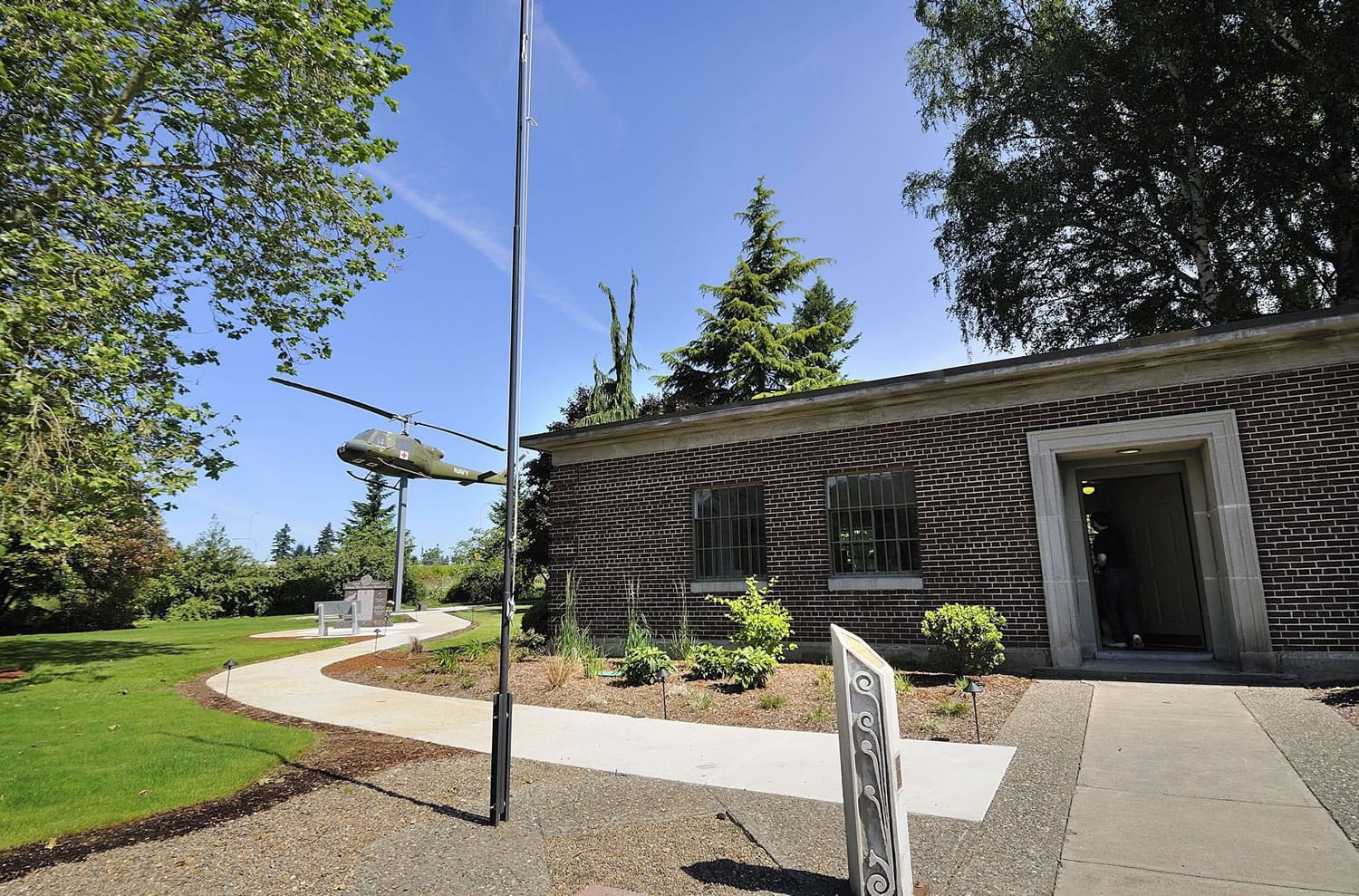A retiree from World War II is being called back into service on a historic Vancouver site.
The radio transmitter building is two miles away from Pearson Field. Seventy years ago, they both were part of Vancouver’s sprawling U.S. Army base, although at opposite ends. And that was the idea. According to a U.S. Army history of defense installations, “In all cases, radio buildings were located at a distance … so that radio operators received minimal disturbances in sending and receiving messages.”
People who want to contribute to the museum effort can call the VA’s Anne Marie Murphy at 360-737-1441.
The assignment? Showcase some of that history.
The project involves a modest brick building in the northwest corner of the Vancouver Veterans Affairs campus. It was built in 1940 as the radio transmitter building for Pearson Field. Now volunteers, including members of a local military heritage group, are working to create a museum that also will honor veterans.
It’s in an appropriate location, next to Spanish-American War and Korean War memorials, and near the Huey helicopter — visible from Interstate 5 — that is part of the Vietnam War Memorial Garden.
There are some gaps between those eras. Museum organizers plan to fill in the gaps with displays and artifacts representing those who served in World War I and WWII.
The building itself is one of those artifacts. The radio transmitter site is one of only three structures on Vancouver’s VA campus dating to World War II. The others are a gymnasium and a former patient ward converted to office space. The museum site is the only one of the three that was designed to be a permanent building.
“This is a good building to use as an interpretive center,” said Army Maj. Jeff Davis, president of the Vancouver Barracks Military Association.
With the museum opening slated for Sept. 14, the team — including veterans Jack Giesen, Bill Houser and Lyle Wold — has been assembling displays and getting artifacts ready. Some of the material reflects the medical roots of the location, where the U.S. Army opened Barnes General Hospital in April 1941. The facility now is a branch of the Portland Veteran Affairs Medical Center.
Standing in what will be the main display room, Davis pulled several items out of cardboard boxes.
One eye-catching piece was a glass apothecary funnel once used in the hospital pharmacy. There’s also a mortar and pestle, used to grind powders for medications.
Years ago, a pharmacist boxed up the items and put them in a closet, said Anne Marie Murphy, VA community development officer. When the pharmacist retired, he passed the collection along to her.
“It’s thrilling to take things out and look at them,” said Davis, a historian and author. “But each time you do, it’s a little more wear.”
A few of the artifacts can survive the handling, including a well-worn mule shoe. Someone dug it up when volunteers were putting in the nearby memorial garden, and it’s a reminder that this certainly is not the spot’s first transition.
“The same land has had lots of uses,” Davis said.
That goes for the entire campus. Seventeen WWII buildings were demolished in 2004 to make way for the county’s Center for Community Health. A historic regimental chapel was torn down in 2007 to make way for a road and transit center.
Chapel artifacts
Now the museum is providing a new home for artifacts that had been part of that historic chapel. A colored glass window includes pieces of broken bottles, with blue pieces coming from milk of magnesia bottles. There is a chapel pew, a Veterans Affairs communion set and the top couple of feet from the chapel’s steeple.
There also are two mosaics, assembled on sheets of plywood almost 70 years ago. While they look like a traditional tile mosaics, the unknown artists sliced up pieces of linoleum flooring to create the panels.
One aspect of military history figures to be a no-show: There are no plans to display weapons.
They weren’t a part of the site’s mission, said Giesen, treasurer of the Vancouver Barracks Military Association.
“The only weapons would have been carried by MPs at guard shacks,” Giesen said.
Funding for the museum project did not divert money from veterans’ health care, Murphy said. A big share of the renovation was supported by a $75,000 donation from the Baak family, which was the main contributor to the Vietnam War Memorial Garden.




